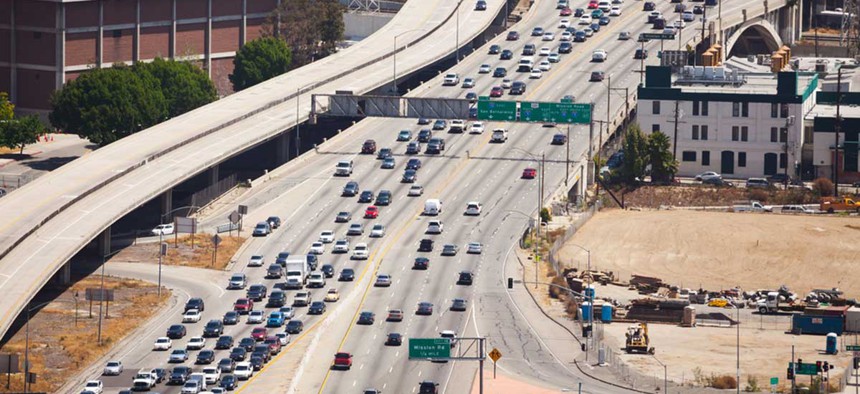
Sergey Novikov/Shutterstock.com
Congress Finally Has Its Long-Term Transportation Bill
A five-year bill offers some security, but no permanent solution to a funding mess.
After years of short-term bills that have left states and transportation agencies desperate for cash and long-term certainty, House and Senate negotiators on Tuesday released a compromise transportation bill that will keep programs afloat for five years.
The 1,300-page “Fixing America’s Surface Transportation Act,” or “FAST Act,” is the combination of transportation bills that cleared both chambers earlier this year and will represent the first long-term transportation bill to pass Congress in more than a decade.
The final bill comes up a little short than the six-year bill members had originally promised: it’s just five years total and spends $296 billion overall, the result of a hodgepodge of funding mechanisms highlighted by the liquidation of a Federal Reserve surplus account.
But given the dire straits of transportation finance, nobody’s much sweating a lost year when the result is a bill that’s fully paid for.
“You can’t get six years out of” the bill’s particular set of pay-fors, said Sen. John Thune. “But this is the biggest highway bill in some time.”
Or as a chipper James Inhofe, the lead Senate Republican on the bill, put it: “All’s well that ends well.”
The race is now on to get the bill passed before a Friday deadline when money runs out. It’s expected to make it to the House floor on Thursday, but the Senate has a busy agenda this week, with an expected vote-a-rama on Thursday evening.
That could leave members passing yet another short-term extension to ensure federal transportation dollars keep flowing to states.
The bill does appear to boost spending for both highway and transit programs in the short term. But it doesn’t provide a permanent fix for the problems looming over transportation spending, nor does it provide the $400 billion over six years that the Obama administration has said is necessary to bring the nation’s roads and bridges up to good repair.
The federal gas tax hasn’t been raised or indexed to inflation since 1993, which has left the Highway Trust Fund desperate for cash, with a roughly $16 billion shortfall a year. Without another funding source, the fund was projected to run dry in the spring of 2016.
The bill is instead paid for by a jumble of pay-fors, including $40 billion from the Federal Reserve surplus account, which acts as a cushion to help the Fed take potential losses. The bill also sells 66 million barrels of crude oil from the nation’s Strategic Petroleum Reserve for $6.2 billion. Among the other funding mechanisms is revenue from a customs fee for airline and cruise passengers.
That combination would leave Congress desperate for more money in five years, but offers some small relief at the moment. The Senate originally passed a six-year bill with just three years of funding, something the House was set to move as well until Rep. Randy Neugebauer floated the Federal Reserve proposal.
Still, critics and even some members have decried the use of “gimmicks” to pay for the bill.
Among the hang-ups to reaching a final compromise were several safety provisions in the bill, including one related to the amount of rest that truck drivers could take. After safety groups and Democrats balked, that language was removed from the bill.
Another provision that would have lowered the legal age of truck drivers from 21 to 18 was also amended to become just a pilot program in order to gather more support.
The bill does contain the controversial reauthorization of the Export-Import Bank, but last-minute hopes to attach a provision reauthorizing health care funding for 9/11 responders was scuttled.
Neither chamber is expected to have much trouble passing the bill, given the pending deadline and the bipartisan support for infrastructure spending.
(Image via Sergey Novikov/Shutterstock.com)






